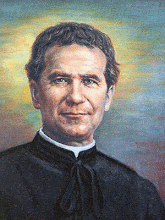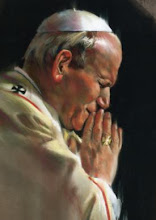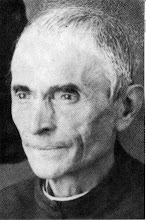The Lord calls us all to have a personal relationship with Him. This personal relationship is based on knowledge — God knowing us and we knowing God. God already knows us; His knowledge is perfect. Despite our best attempts to ignore Him, God has always known us. But we weren’t born with this knowledge of God.
Even when we discover God through revelation, we might know about God but still might not know Him. In the Bible, to “know” someone is to engage in sexual intercourse with that person. When we speak of knowing God, and of God knowing us, we are speaking about a different but similarly intimate relationship with Him.
Jesus tells His disciples:
Not every one who says to me, “Lord, Lord,” shall enter the kingdom of heaven, but he who does the will of my Father who is in heaven. On that day many will say to me, “Lord, Lord, did we not prophesy in your name, and cast out demons in your name, and do many mighty works in your name?” And then will I declare to them, “I never knew you; depart from me, you evildoers.” (Matt. 7:21–23)
It is clear that those who will be accepted into heaven are those who know God, who have a personal relationship with Him. The question is: What does it mean to have a personal relationship with the Lord? It means that we let God be in charge of our lives, that we form a relationship with His Mystical Body, and that we get to know His Mother. It also demands that we seek a constant and perpetual conversion, serve others in love, and create disciples.
Let’s look at various ways to develop or deepen your personal relationship with the Lord: through prayer, letting God be in control of your life, being involved with the Church, growing in devotion to the Blessed Mother, and seeking spiritual direction.
Pray
Because prayer is personal, it is the most direct way of developing and maintaining a personal relationship with the Lord. The time we spend talking to our loved ones, and listening to their needs and concerns, allows our relationship with them to grow deeper. Likewise, when we grow in our relationship with God through prayer, we come to understand Him better and to understand His will for us.
A good prayer life requires practice, discipline, commitment, openness, honesty, and love. To get a good start on your prayer life, or even to add to it, look for a book of Catholic prayers, of which there are many kinds. Also, check out a breviary, which is a book of liturgical prayers. There are also several apps for your phone or tablet that contain many prayers, including the breviary. Make a place in your home, a room or a corner, for prayer.
In flight training, when one pilot hands the control over to the other, the receiver says, “My controls,” and the giver responds with, “Your controls” as he lets go of all controls, and again the receiving pilot responds with “I have full control.” When we have a personal relationship with Jesus, we aren’t even copilots, because He is always in control. When we trust God and give Him complete control of our lives — which we never really had much control over in the first place — God performs maneuvers and makeovers that we never thought possible. Moreover, He removes all boundaries that hold us down and frees our spirits to soar.
This is especially true in the case of sin. We cannot become free of sin and distress until we let God transform us. We let God transform us by participating in the sacraments, serving others, praying, and reading Scripture regularly.
A Relationship with the Church
A personal relationship with Jesus also means a personal relationship with His Church. Recall the story of Saul on his way to Damascus to punish and persecute Christians.
But Saul, still breathing threats and murder against the disciples of the Lord, went to the high priest and asked him for letters to the synagogues at Damascus, so that if he found any belonging to the Way, men or women, he might bring them bound to Jerusalem. Now as he journeyed he approached Damascus, and suddenly a light from heaven flashed about him. And he fell to the ground and heard a voice saying to him, “Saul, Saul, why do you persecute me?” And he said, “Who are you, Lord?” And he said, “I am Jesus, whom you are persecuting.” (Acts 9:1–5)
Saul must have been confused. He persecuted Christians, this he knew, but the voice he heard was not one of the men or women he had directly persecuted. This voice was telling him that by persecuting Christ’s people, Saul was persecuting Christ Himself. Saul, who later became Paul, would soon realize that Jesus identifies directly with His people — not in a symbolic way, but in reality.
Because of this identity, the Second Vatican Council document Lumen Gentium rightly says:
God gathered together as one all those who in faith look upon Jesus as the author of salvation and the source of unity and peace, and established them as the Church that for each and all it may be the visible sacrament of this saving unity. (no. 9)
We see clearly that the Church is the most profound institution in the world. Jesus came to establish the kingdom of God, and to make that happen, He established a Church and promised to remain with her always (Matt. 28:20). He has given His Church authority (see Matt. 10:16; 28:19) and commissioned her to teach and to remind His people of everything He said (John 14:26; 16:13).
We are therefore called to have a relationship with Jesus and His Church. To have a good relationship with the Church, we should turn to her as a source of truth, participate in her sacraments, and obey her laws, for when we obey the Church, we obey Christ:
He who hears you hears me, and he who rejects you rejects me, and he who rejects me rejects him who sent me. (Luke 10:16)





















